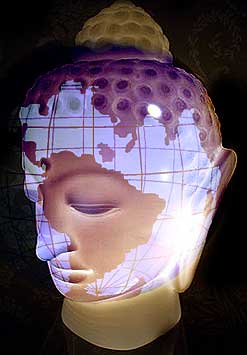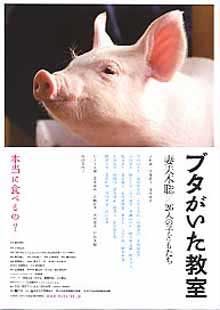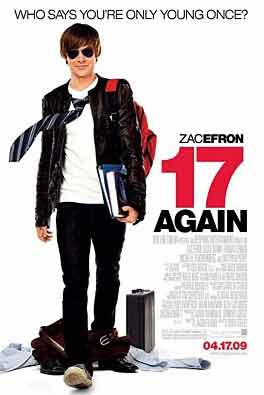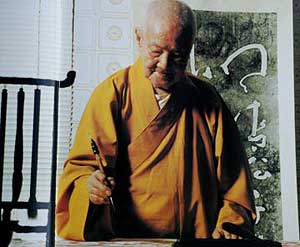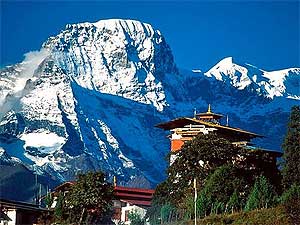First Earth Hour, now Earth Day, what next? Earth Week?
Hate to break it to you, but in many countries, it really IS Earth Week now.
Don’t worry, it’s not about turning off electricity for a whole day. Earth Day is simply an event to remind everyone about the importance of protecting and appreciating our planet.
This year, the US-based Earth Day Network will be starting a Green Generation campaign which will slowly build up towards Earth Day’s 40th anniversary next year.
According to Wikipedia, the theme 40 years ago was overpopulation. In spite of that, world population has almost doubled since then, so imagine what would happen if we ignored the current themes of sustainability.
To find out more about the Green Generation campaign and how you can get involved, log on to earthday.net/node/13475.
Creative initiatives to protect our planet
GREEN business has become the trend of the century. While the Earth Hour was a short-term effort to create awareness about the environment, or as critics claimed, a mere publicity stunt, some organisations are going green by making long-term changes for sustainability.
The following are some examples of green business initiatives by several companies:
Waterless urinals in men’s washroom
At the Sunway Pyramid, there is no more need to flush at the urinals in the men’s toilets as each urinal is coated with BioCare liquid, a special chemical that breaks down urine into environment-friendly components without using water.
“This is part of the mall’s effort to conserve water and reduce wastage to help the environment. As the breakdown of the urine takes place immediately upon contact, this system ensures the urinals are always hygienic for use,” said the mall’s leasing and marketing general manager Kevin Tan.

According to Tan, the chemical is changed weekly to ensure its effectiveness.
Other green activities by the mall include a car park guiding system, the Alam Flora Recycling Buy Back Centre, and the Bring Your Own Bag campaign.
The parking system uses red/green LED (light emitting diodes) light to guide motorists to the nearest available parking bay.
“This system helps drivers to save time in locating available parking bays and reduces the time spent on finding available parking bays means less carbon monoxide emission from running vehicles,” Tan said.
“Shoppers and tenants can also recycle old cardboard boxes, newspapers, can and hard plastic for cash at the Alam Flora Recycling Buy Back Centre (BBC), which is open daily from 10am to 5pm except Thursday,” he said.
“A recycling buyback centre in the mall encourages not only the public but the retail outlets to trade in recyclables for cash as well.
In addition, the Sunway Pyramid will be rewarding shoppers with free parking every Tuesday (except public holidays) for supporting the environment. To qualify for the scheme, shoppers need to bring their eco-friendly bags (paper or plastic bags are not allowed) and buy product-based goods worth a minimum of RM50. They then have to present their receipts to one of the concierges and exchange their parking ticket for a free ticket.

“The main message of the campaign is not solely about the mall going green for the long-term, but that its shoppers take ownership and do their part for Mother Nature,” Tan said.
100% PCR PET Bottles
The Body Shop, known for its environment-friendly initiatives, is no stranger to the concept of green business.
According to The Body Shop marketing communication manager Jennifer Chan, one key value at The Body Shop is to protect the planet.
“Early last year, 100% recycled plastic bottles were introduced. That’s because some people still discard the packaging the usual way even if there’s a recycling centre or the option to return it to our outlets. The bottles are also 100% recyclable, from the cap to the label, even if it ends up in a landfill,” Chan said,
She said The Body Shop paper bags were made from 100% recycled paper with printing using water-based ink that did not harm the environment.
For the Green Office concept, the company’s workers are encouraged to practice the 3R — reduce, reuse and recycle.
Recycle bins are placed in the office for used paper and empty bottles.
Employees are advised to switch off all electrical appliances such as lights, air-conditioners, and computers when not in use, print emails or documents only when necessary and print all documents double-sided where possible, as well as publish, distribute or copy documents electronically.
As for reuse, the workers are encouraged to use scrap paper for taking notes and printing, re-use envelopes from internal mail and use own coffee mugs or water bottles for water and beverages instead of plastic/paper cups.
Up next is the “Kick The Bag Habit” on World Environment Day on June 5. Launched on Earth Day last year, the campaign raised RM91,953 towards the protection of the Temengor rainforest and over 77,000 paper bags saved over the period of the campaign.
For each shopping bag declined by every customer during the campaign, The Body Shop donated 50 sen to its campaign partner Malaysia Nature Society (MNS). Customers who requested a bag donated 50 sen towards the campaign.
“The concept is same for this year, but customers can now have the choice to purchase a limited edition tote bag at RM5, where RM2.50 will be donated to the MNS for the Save Temengor campaign,” Chan said.
Reducing carbon dioxide emissions
Panasonic Malaysia Sdn Bhd is committed to reducing carbon dioxide (CO2) emissions from its production activities by 300,000 tonnes globally over three years from fiscal year 2008 to 2010.
According to its assistant general manager (corporate communication and branding), Azizah Wahid, as part of the company’s environmental sustainability management activities, it will focus on three initiatives: Eco ideas for manufacturing, Eco ideas for everybody and everywhere, and Eco ideas for products.
Internally, the company has adopted a series of activities such as “no overtime” day, saving energy by switching off air-conditioners and lights, “no driving out for lunch” day to save petrol and reduce carbon footprint as well as recycling and office cleaning to maintain a clean and healthy work environment and work culture.
Azizah said the company was also striving to develop technologies for resource conservation while improving product functions.
To reduce CO2 emissions in the group’s activities, Panasonic will improve productivity in all manufacturing processes, including product planning, procurement, marketing, logistics and recycling.
“Reducing resources will reduce the amount of material used; reduce the rate of non-circulating resources over their life cycles; use more recycled resources; and increase recyclable resources. At the same time, Panasonic will reduce CO2 emissions,” Azizah said.
For the Clean Factories initiatives, Panasonic emphasises preventing global warming, reducing total waste, and reducing the release and transfer of chemical substances.
The company is endeavouring to minimise all input and output and to make all their manufacturing sites into Clean Factories.
Panasonic also promotes green logistics and recycling waste to help prevent global warming and reduce air pollution.
Panasonic will expand its eco- activities to local communities around the world. The company is promoting awareness-raising activities such as Love the Earth Citizens Campaign to encourage employees and their families to be active participants in eco-initiatives at home, the workplace and local communities.
Panasonic is aiming to establish factories co-existing in harmony with local communities and societies.
In addition to giving environmental consideration to materials and promoting recycling-oriented designs, Panasonic will accelerate development of energy conservation technologies while eliminating products with low energy efficiency.
By NASA MARIA ENTABAN and IAN YEE
FROM rearing their own chickens to adopting lightbulbs, the young people of Malaysia have sure risen to the challenge of preserving our planet.
It’s one thing to turn off your lights for an hour every year to reduce your carbon footprint as was done in the recent Earth Hour global campaign, and another altogether to spend your weekends saving the natural habitats of turtles, or cleaning up waterfalls.
But that’s exactly what some young people have been doing; and in conjunction with Earth Day today, R.AGE checked out some of the activities our youth are getting involved in to help protect our little blue planet.
Can’t adopt a tree? Try a lightbulb!
Planting trees may not be something everybody can afford to do in the concrete jungles that we have built around ourselves, so why not try something else more creative?

A group of 18 A-Levels students in Kolej Tuanku Ja’afar (KTJ), Negri Sembilan, came up with an idea for people to start living an environmentally sustainable lifestyle.
The students organised an “Adopt-A-Lightbulb” campaign as part of their school’s Eco Fair (taking place today at KTJ), and have so far raised enough money to sponsor over 200 energy-saving lightbulbs to various schools and charity homes.
“These lightbulbs are actually much more practical,” said Tai Yang, 19, one of the students.
“A Grade A energy-saving bulb can save up to 80% energy, and they have a lifespan of 6,000 to 15,000 hours, while normal bulbs last a maximum of 1,000 hours.
“That’s why a lot of businesses use energy-saving lightbulbs. They’re more expensive, but if you consider how long they last, it actually comes up to about the same price.”
Tai initiated the campaign as part of the Global Debate competition (organised by United Nations Foundation initiative The People Speak), a worldwide project that encourages youth to speak out about pressing global issues.
Tai hopes that the event won’t just impact his fellow schoolmates, but that it will help others beyond the school realise the benefits of even small acts like switching lightbulbs.
He said: “I used to think global warming was a myth. That’s what a lot of young people are still like. They don’t believe it’s a serious problem.”
Rearing to go
While the KTJ students are working on a campaign as a group, others choose to do it their own way.
Take Mah Chong Ee, 25, for example,whose hobby of rearing chickens ensures that he and his friends not only have healthy food to eat but also helps to do away with commercial waste associated with purchasing poultry from say, a supermarket.
“I just find it sad that we barely know what real chicken tastes like anymore. Once you have tried free range or kampung chicken, you’ll taste the difference. It’s like the birds we eat these days aren’t even real chickens anymore,” said Chong Ee who, together with his father, has been rearing a few small chicks for their meat.
Free range animals are those brought up in a more natural environment, compared to those mass produced in farms..
He was quick, however, to distance himself from those caught up in the organic food trend.
“I’m not some organic food freak. The rest of my eating habits are quite normal. I just feel that it’s a small step I can take to have a better lifestyle. I don’t expect people to start growing their own fruits and vegetables, but it would be great if they could,” he said.
Waterfall Survivors
In July 2008, nature enthusiast Joe Yap established a Facebook group called “Waterfall Survivors”, a group that would unite over 1,000 waterfall lovers in Malaysia.
“I found Kanching Waterfalls in Rawang, Selangor, online while searching for a perfect family outing venue,” Joe, 30, explained.
“I was immediately interested in locating more waterfalls, and decided it would be a good idea to hold waterfall expeditions.”
Waterfall Survivors organises regular waterfall exploration trips – day trips as well as overnight trips, where members gather to collect rubbish, socialise and, bathe in, as well as explore, the waterfalls.
Last Sunday’s expedition was the group’s most successful to date as 300 people, made up of the Facebook group members and their friends, showed up to clean up Kanching Waterfalls.
This was the first time Kong Yink Heay, a 25-year-old production executive, had taken part in a collective effort.
“Whenever I picked up a piece of rubbish during that campaign I feel I’ve given back something to nature. After clearing up the rubbish, the waterfall looks more undisturbed.”
Check out the Facebook page at tinyurl.com/dhjqe4 or e-mail waterfallsurvivors@hotmail.com for more information about the group.
PENYUinc
Mohd Amzari Abas, 29, last saw a Giant Leatherback turtle when he was a small child, on a trip to Rantau Abang, Terengganu, with his family.
“That was the first and last time I have encountered that mighty creature. From then on I vowed to do something to help preserve these beautiful sea turtles,” said the founder of PENYUinc.
In 2006, Amzari visited Turtle Sanctuary in Cherating, Pahang, and to his shock discovered that the Giant Leatherbacks no longer lay eggs on Malaysian shores. He decided then that he would set up a volunteer group to help the sanctuary out.
“At first it was just me and a few friends, but now we have around 600 members from all over the world who are passionate about saving the turtles,” Amzari said.
At the centre, volunteers clean up the beach, give information to tourists, learn about turtles and release baby turtles into the sea.
“The best part is helping the beach rangers during their night patrols on the beach and coming across sea turtles! The most valuable experience would be watching them lay eggs and learning about the process,” Amzari noted.
“I don’t want my grandchildren to only encounter turtles as figurines in a museum. They should have the same experiences we do,” Amzari added.
Those interested to take part in the programme must be over the age of 18. Visit myspace.com/penyuinc or e-mail penyuinc@yahoo.com.au for details.
Sri KDU River Rangers
At 17, nature lover Richard Liew already knows how to test water pollution levels, and, along, with 30 other students of Sri KDU, has cleaned a river.
Not many 17-year-old teenagers, let alone adults, have experienced anything quite like the River Rangers at the Sri KDU school in Selangor, who recently attended a training session run by the Global Environment Centre.
Prior to the river clean up last month, the students were given theoretical sessions at the school to educate them on the status of rivers in Malaysia, the main sources of pollution and its impact on our drinking water and health.
Richard and his peers went to Sungai Penchala in Petaling Jaya and were astounded by the strange things they discovered submerged in the river.
“Apart from regular rubbish, there were bicycles, cables, even a mattress floating in the river!” Richard shared.
“Being a part of this programme makes me feel useful. As a teenager, I have a role to play in society, and I’ve done my part and will continue to do it.”
The River Rangers will continue to carry out periodic checks and river cleanups and in the process learn to appreciate that rivers are the lifeblood of the environment.
By SHARMILA NAIR
THESE movies and songs will get us all in the right frame of mind, and strengthen our resolve to be good to Mother Earth.
This eye-opening and much talked about documentary is former US vice president Al Gore’s personal project to save Mother Nature. It captures viewers’ attention from the start with its predictions on the catastrophes waiting to befall humanity as a result of global warming.
The Inconvenient Truth explores climate change and how it affects humans today and in the years to come. Great lesson from this movie – don’t take too long to conserve Earth. Start now.
We may be a little tired of Eddie Murphy and his crazy antics but credit should be given where it’s due. Dr. Dolittle 2 has a strong message to share. Eddie reprises his role as Dr. Dolittle, the vet with the ability to talk to animals, who in this movie are preparing to launch a strike to save their woods.

Dolittle works with the animals to stop land developers bent on destroying the jungle and comes up with a brilliant plan to save the animals’ homes.
Who can forget this movie? Not only did it show the world that Julia Roberts has a great cleavage, it also tackled some serious environmental issues.
Based on a true story, Julia plays Erin Brokovich, a single mother who takes on a gas company which she believes is responsible for polluting the town’s water supply. She goes on to bust a cover-up that had taken place and almost single-handedly brings the gas company down.
Melting ice, rising waters and flooding are the issues this movie tackles. Manny the Mammoth, Sid the Sloth and Diego the Sabretooth Tiger discover that the ice wall surrounding their valley is melting and will soon flood their home.
The trio embark on a journey to save their lives and learn why their world is ‘melting’ around them. Okay, so we don’t have mammoths and sabretooth tigers roaming the Earth anymore, but what they face relates to the animals today nonetheless.
Leonardo DiCaprio has long outgrown the love-struck boy in Titanic. Now, the environmentally-conscious actor does movies that don’t necessarily make money but are educational.
The 11th Hour is a documentary, hosted by DiCaprio, featuring prominent scientists and environmental experts looking into how humans can stop destroying Earth and undo the damage we’ve inflicted upon it.
Okay, so the movie basically tells you not to dump pigs’ waste into lakes, but hey, that’s a lesson there. Springfield’s lake is so polluted that when Homer drops his pet pig’s poo container in it, the town becomes a dangerous zone.
The vengeful townsfolk, angered by Homer’s stupidity, descend on the Simpsons and wouldn’t rest until they see blood. The United States Environmental Protection Agency comes to the rescue and cleans up the town in a dramatic and dictatorial manner.
It’s up to Homer to save the town and reunite with his family ... and pet pig.
Unusual hailstorms and tornadoes hit Earth and the entire northern hemisphere is covered with a sheet of ice. Life as we (okay, the characters in the movie) know it ends, and the only one genuinely worried is scientist Roland Emmerich (played by Dennis Quaid).
The movie tries to scare us into taking global warming seriously, but unfortunately, it just comes out looking illogical at times.
Nevertheless, it’s a great step towards making people more aware of global warming and its consequences.
Also, check out these earth-friendly tunes that teach us a lesson or two about keeping nature they way it should be.
This tween queen discusses what most songstress her age don’t. Wake Up America, asks America(ns) to do just that – wake up, and see the destruction that they’ve wreaked on Earth. A catchy tune loaded with Earth-friendly messages, this song should definitely be on everybody’s MP3 playlist.
Our very own wake-up call song, Hijau is still remembered for Zainal Abidin’s smooth voice and its educational lyrics. Hijau bears a conservation message telling us to love our lush and green environment before we lose it all. Yikes!
Jacko is not only wacko for gloves and monkeys but also for the environment, apparently. This 1995 hit song got us all charged up about saving the Earth and watching its video clip still brings a tingle down our spine. Good job, Michael!
Jay Kay has always been passionate about the environment and this song (featured in the movie Godzilla) in particular, pokes fun at people’s indifference when it comes to environmental issues. Don’t let the funky music and beat fool you, this is a real save-the-Earth-now kind of song.
By YAM PHUI YEE
Everyone can do their bit to save the Earth. You can hold an environmental awareness event, design a poster or sign a petition to save endangered animals.
ONE Earth. Environment First. Action Now.
OK, fine, you figured out where that came from – it’s inspired from Prime Minister Datuk Seri Najib Tun Razak’s slogan for his team of cabinet ministers.
But consider the above slogan again. With climate change, depletion of natural resources and loss of habitats for animals happening around the world, we really need to take action now and make conscious decisions to protect this planet we’re living on.

You don’t have to be a scientist, researcher or activist with expertise in environmental issues to get started. At the Generation Green event in Sunway University College last week, students took part in big and small ways to conserve and protect the environment.
The two-day event was jointly organised by the Sunway Alumni Office and the Canadian International Matriculation Programme (CIMP) in conjunction with Earth Day today.
“Generation Green was organised to raise funds to help an environmental organisation. We also wanted to raise awareness of environmental issues and ways to solve the problems,” said CIMP student Ayesha Hannah Amer, 19.

According to her, the students stepped up to volunteer for the project. They also designed and voted for the best brochure to be used for the event.
At Generation Green, students stopped by to check out the exhibition booths set up by various NGOs and environmental groups. At the booths, they discovered composting techniques, learnt about water pollution and were made aware of the threats that coral reefs are facing.
Grace Sim found out about the conservation and community programmes held by Raleigh International Kuala Lumpur in Sabah, while her friend Sarah Chong took part in a signature petition to call for comprehensive federal laws to protect turtles, at the WWF Malaysia booth.
“This is something that everyone could do. It didn’t cost a thing to sign it,” said Sarah, 19.
Others pledged to cut down on plastic bag usage at the Project Daily Million booth and purchased reusable shopping bags and T-shirts with green messages such as “I do my part. Do yours too!”. There were also food sales, games, forums and screenings of documentaries and animated films such as The 11th Hour, The Story of Stuff, Kilowatt Ours, The Man Who Planted Trees and An Inconvenient Truth.

Ayesha, who had watched
The Story of Stuff previously, now thinks carefully before buying an item. The videos screened showed how much impact each consumer has on the environment when seen collectively, and she hoped they will help students, as consumers, make better choices that will benefit the Earth.
“We don’t know how much we waste until we see it through a third person’s life (in documentaries),” she said.
Student Goh Yee Yin, who also volunteered at the event, said that while they can’t stop their friends from shopping, campaigning and having such an event on campus will raise their awareness and convince them to adopt good habits. For that to happen, students need incentives, geology student Kiret Singh suggested.
“They can introduce programmes such as giving some money to customers who return soda cans or giving bonus points to shoppers who reuse plastic bags in malls. Hopefully, people will make it a habit to reduce, reuse and recycle (3R) and less resources will be used,” said Kiret.
His poster on 3R and 3P (Plan, Play, Plant) was among those exhibited at Green Generation. Its tagline “Reduce as priority, reuse as a back-up and recycle as an alternative” encouraged students to cut down on unnecessary consumption of resources and keep recycling of the unwanted items as a last resort. The 3Ps, meanwhile, were about planting trees to make our world greener.
This generation of youths play a role to help make the Earth a better place for themselves and the generations to come, Ayesha believed.
“We have to take the initiative to learn about the various issues. There is information everywhere. We can make a difference.”
